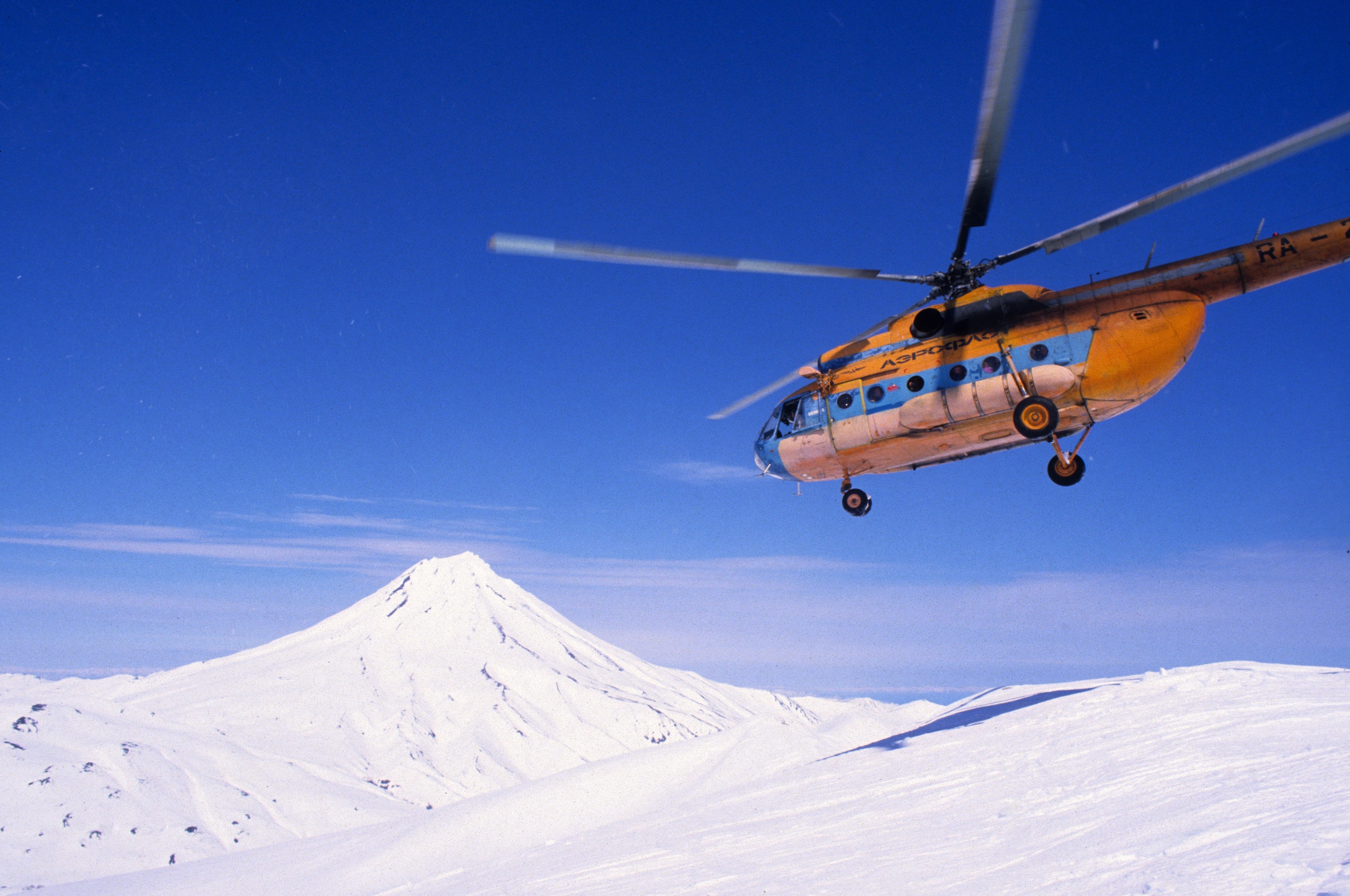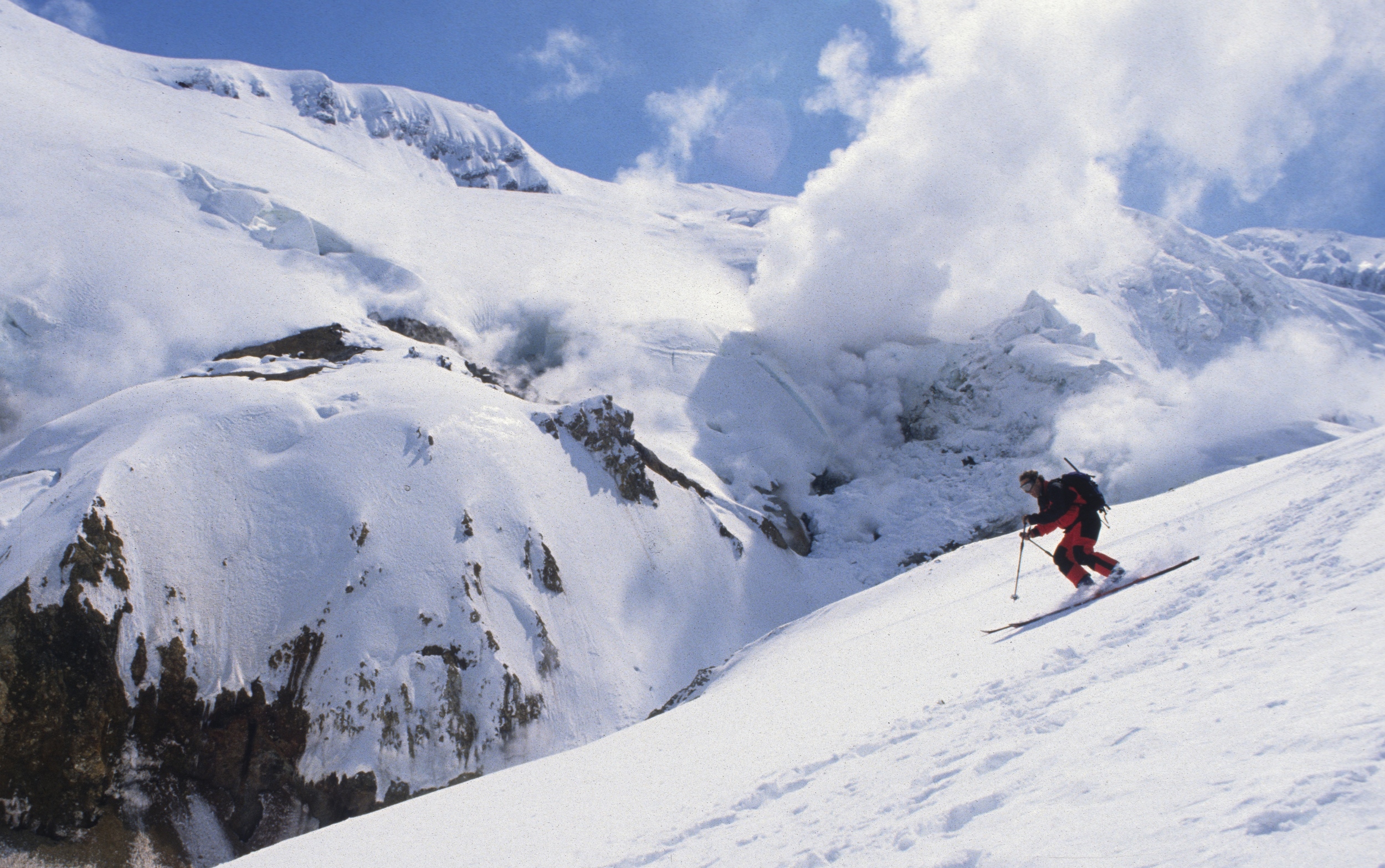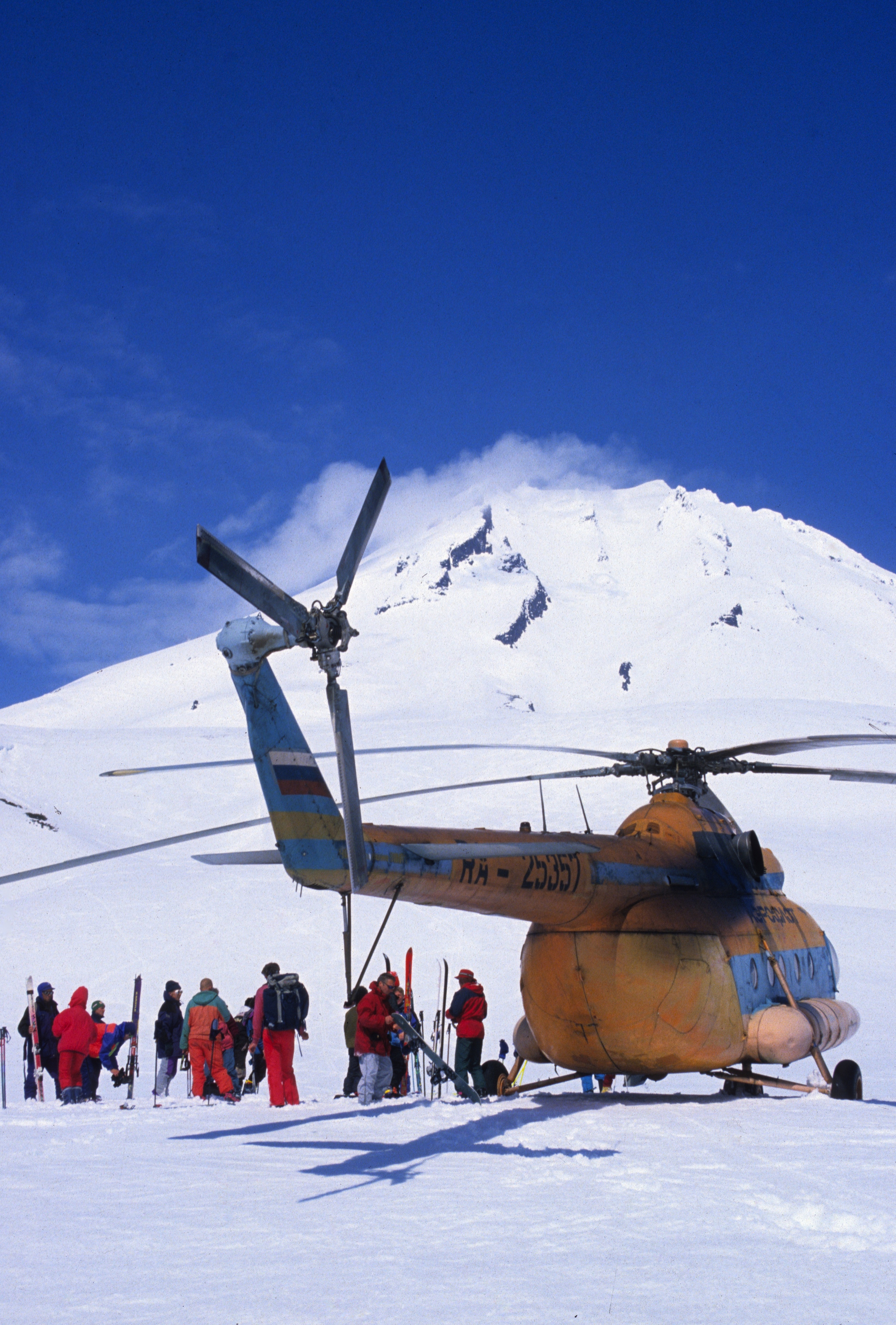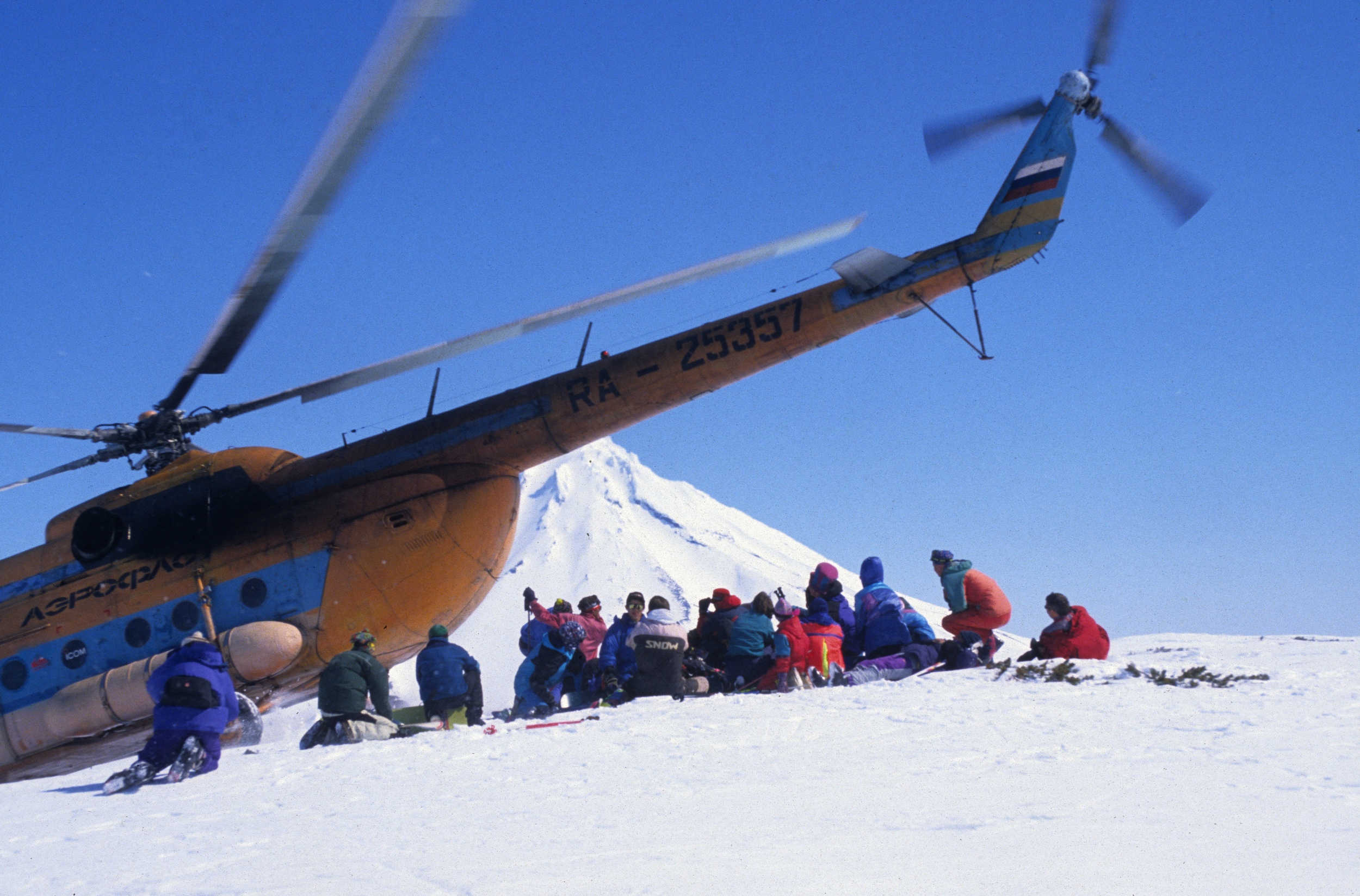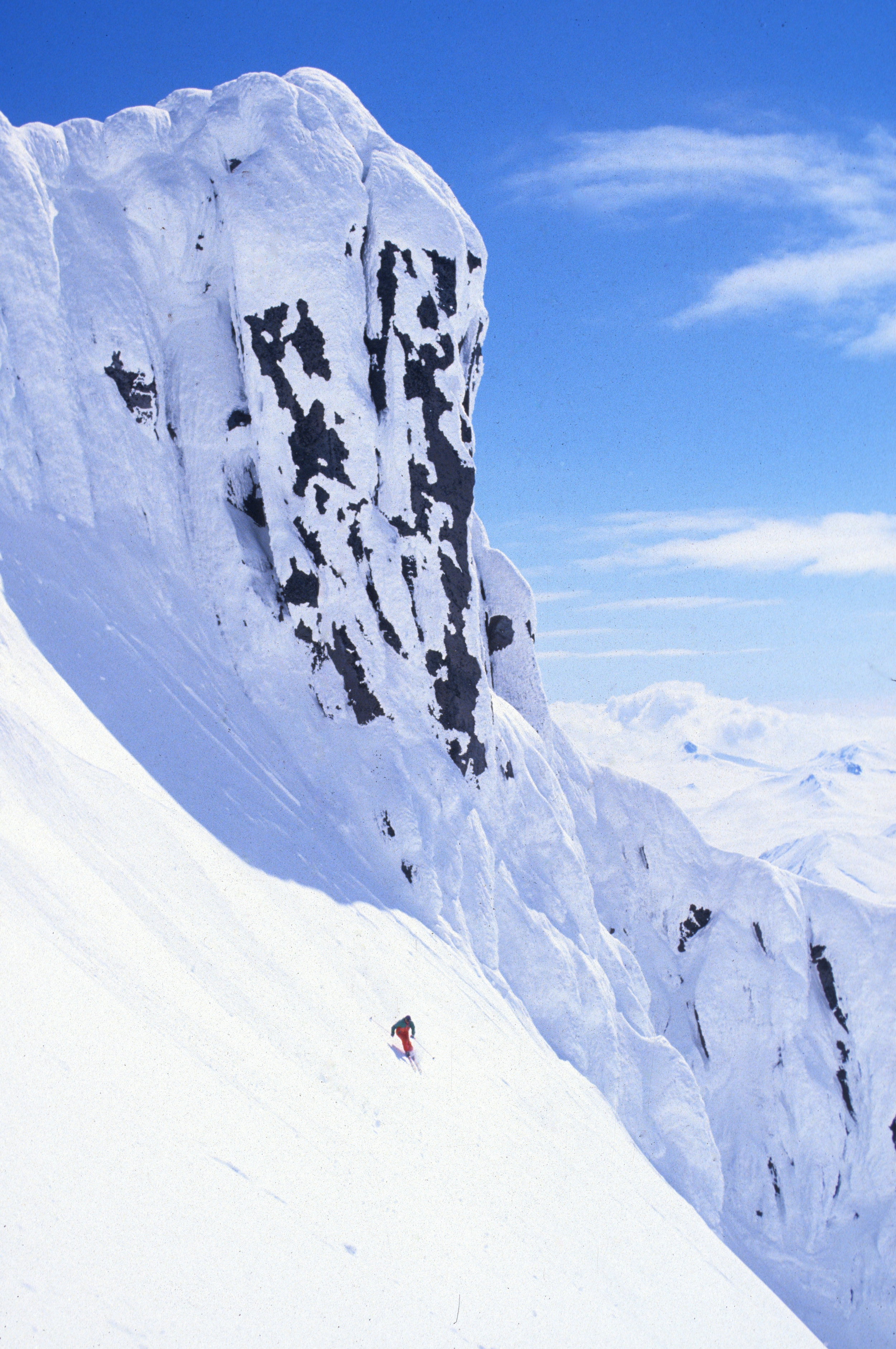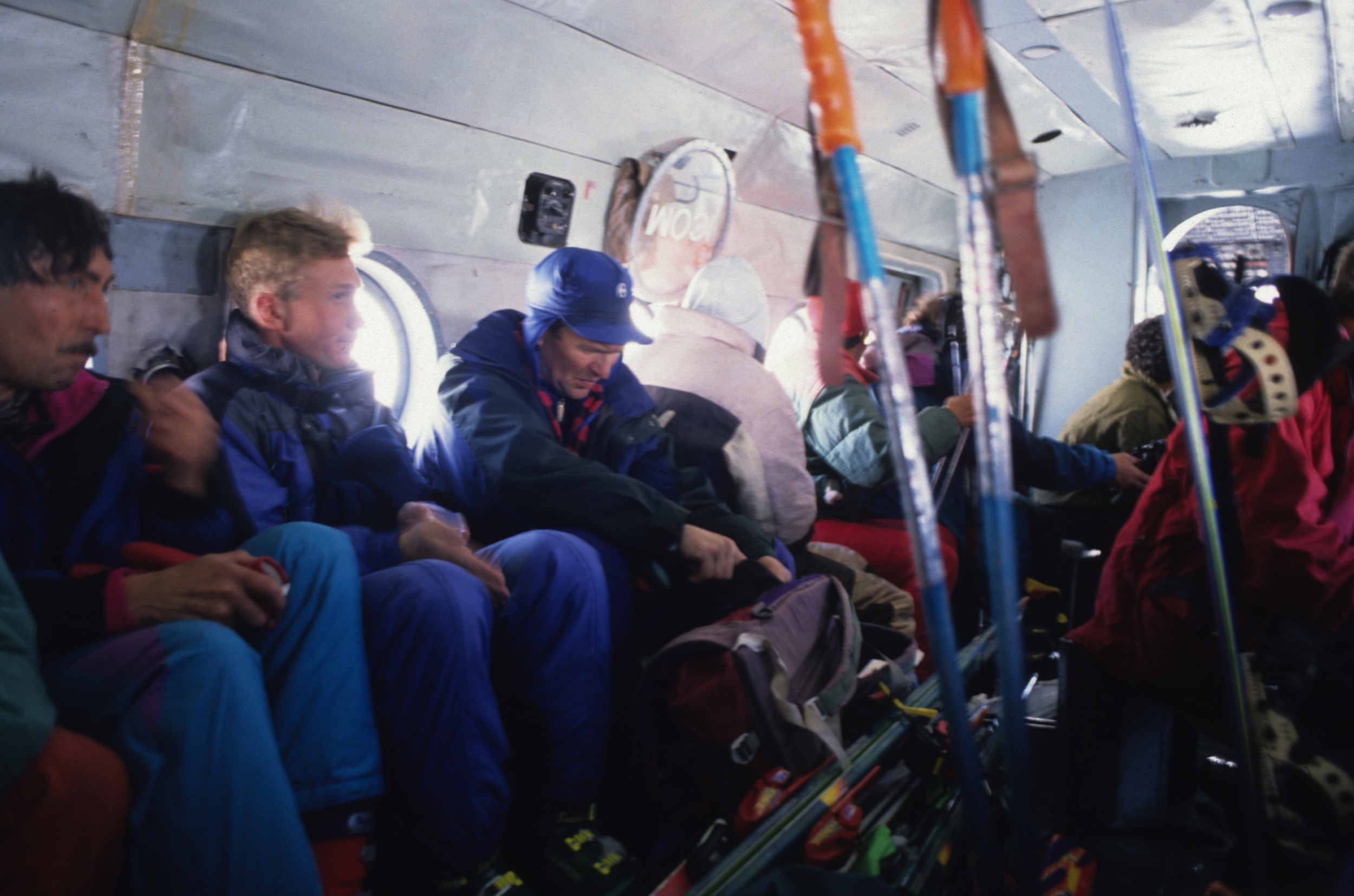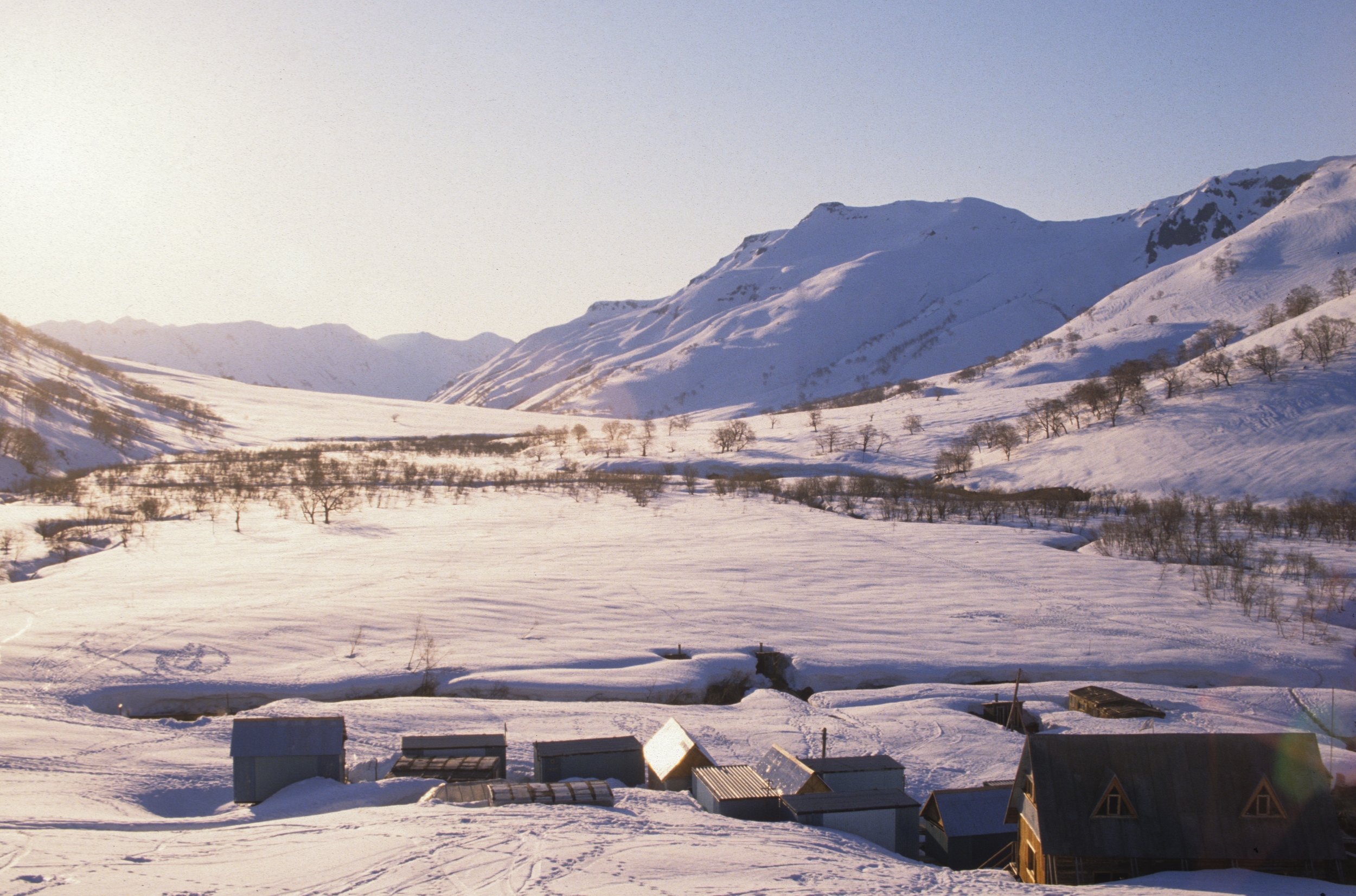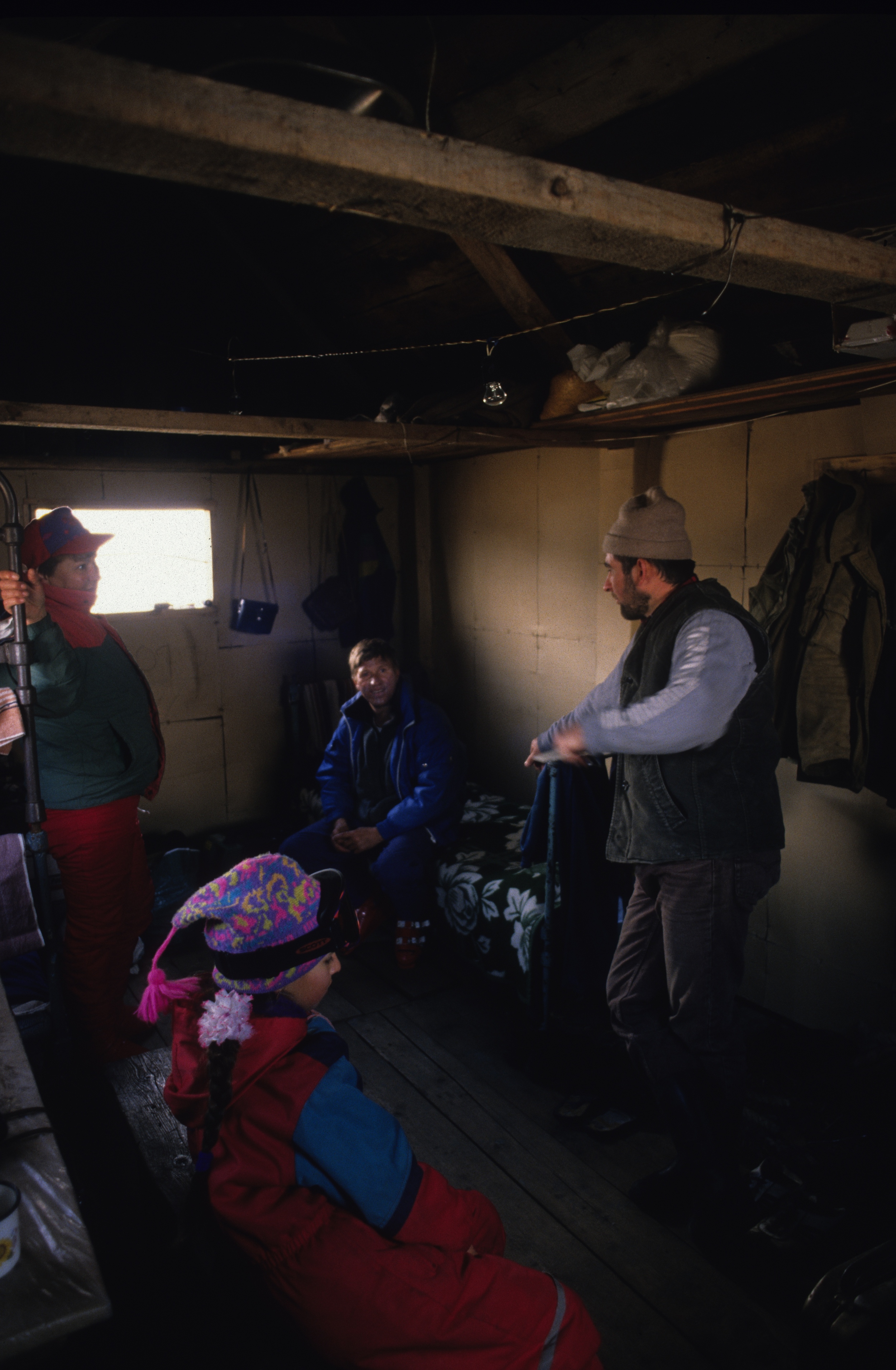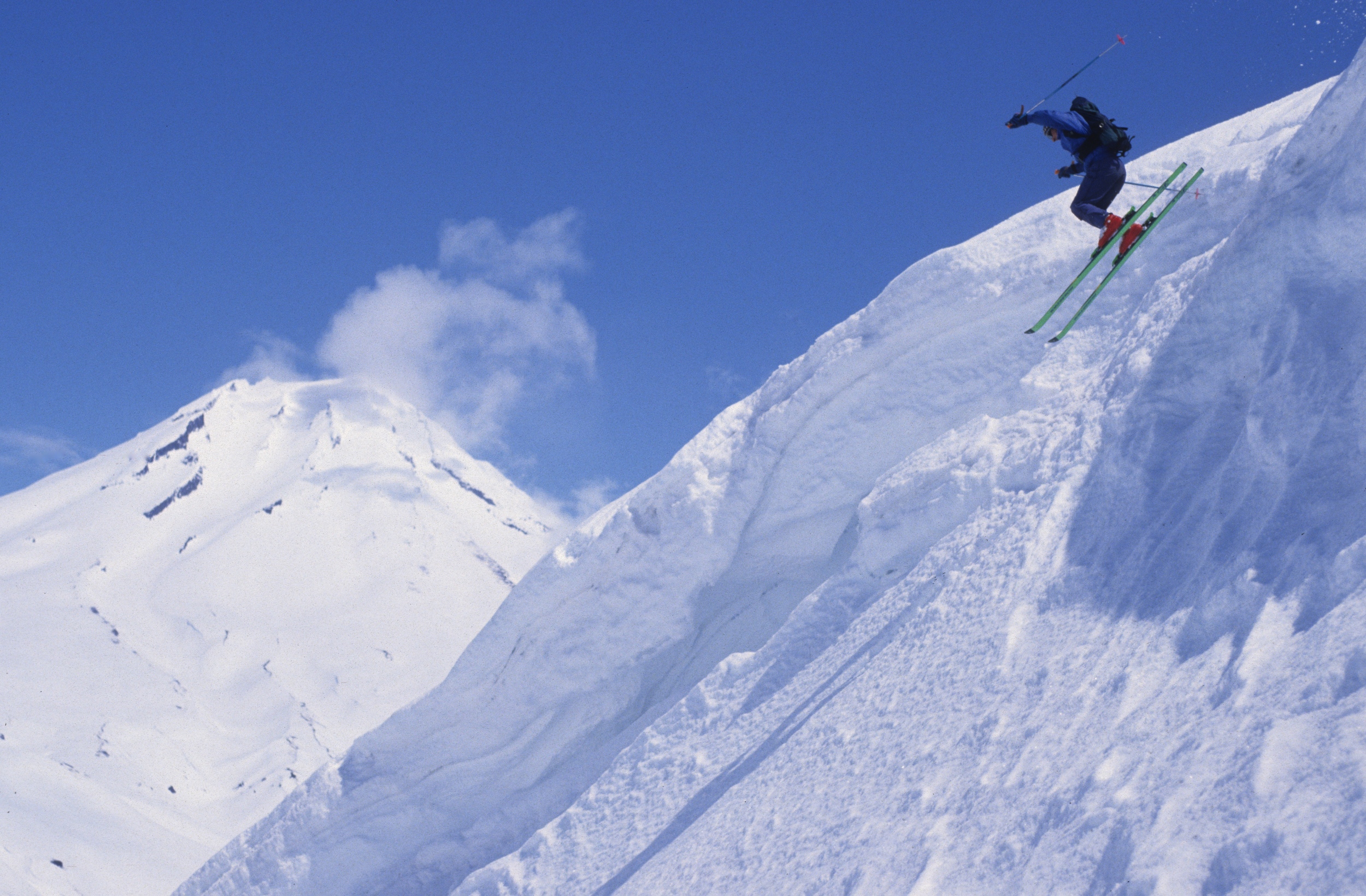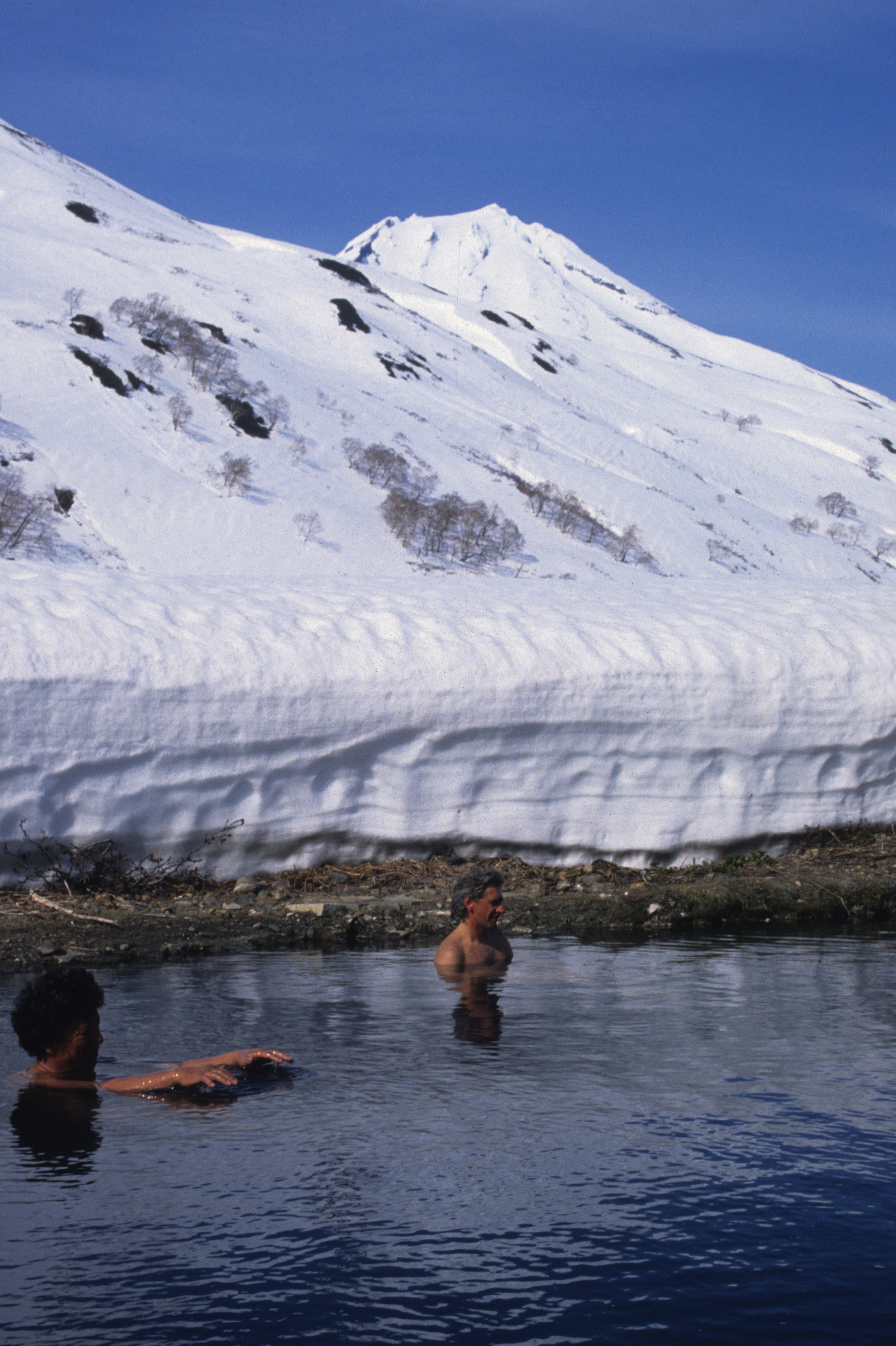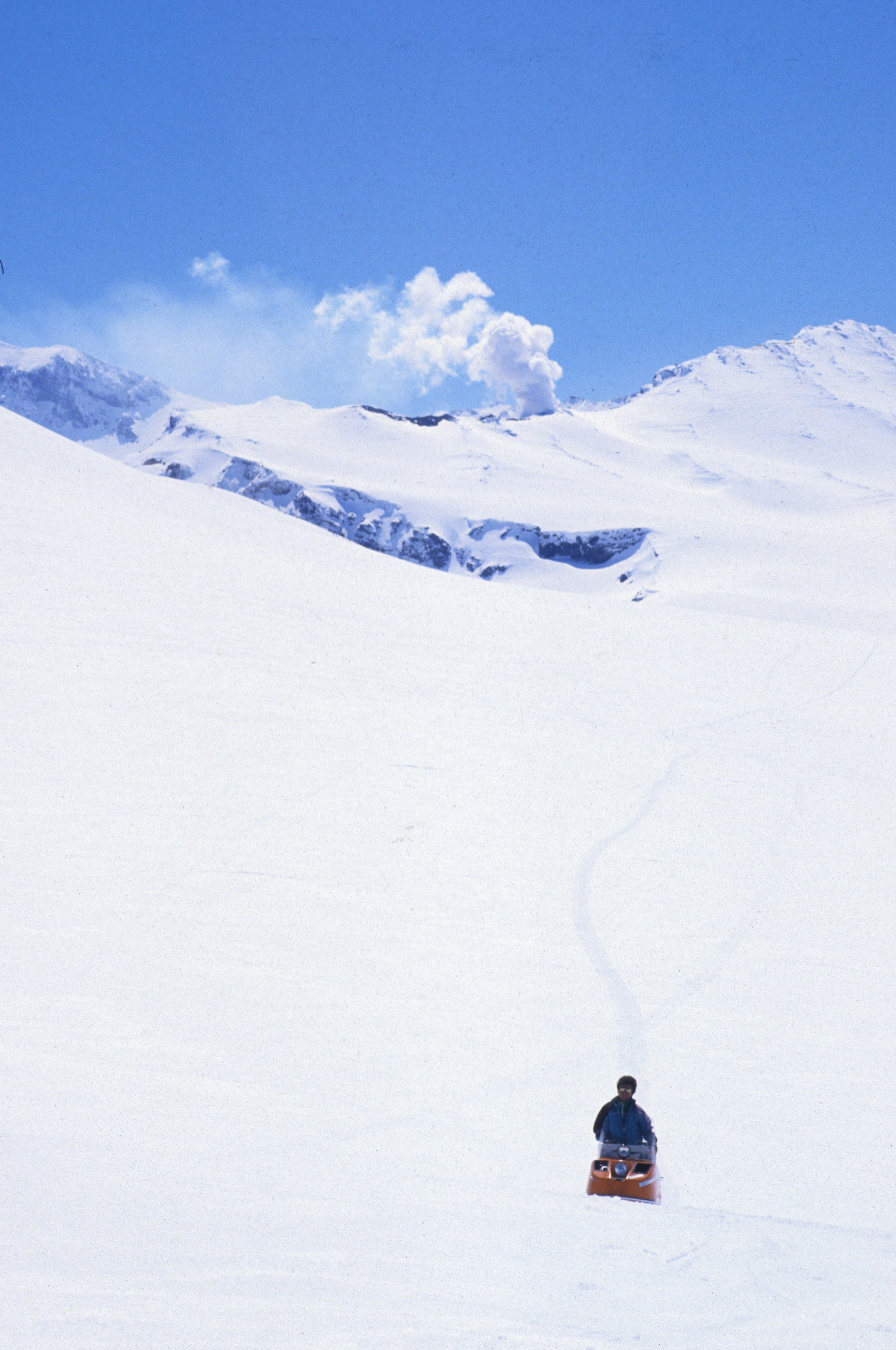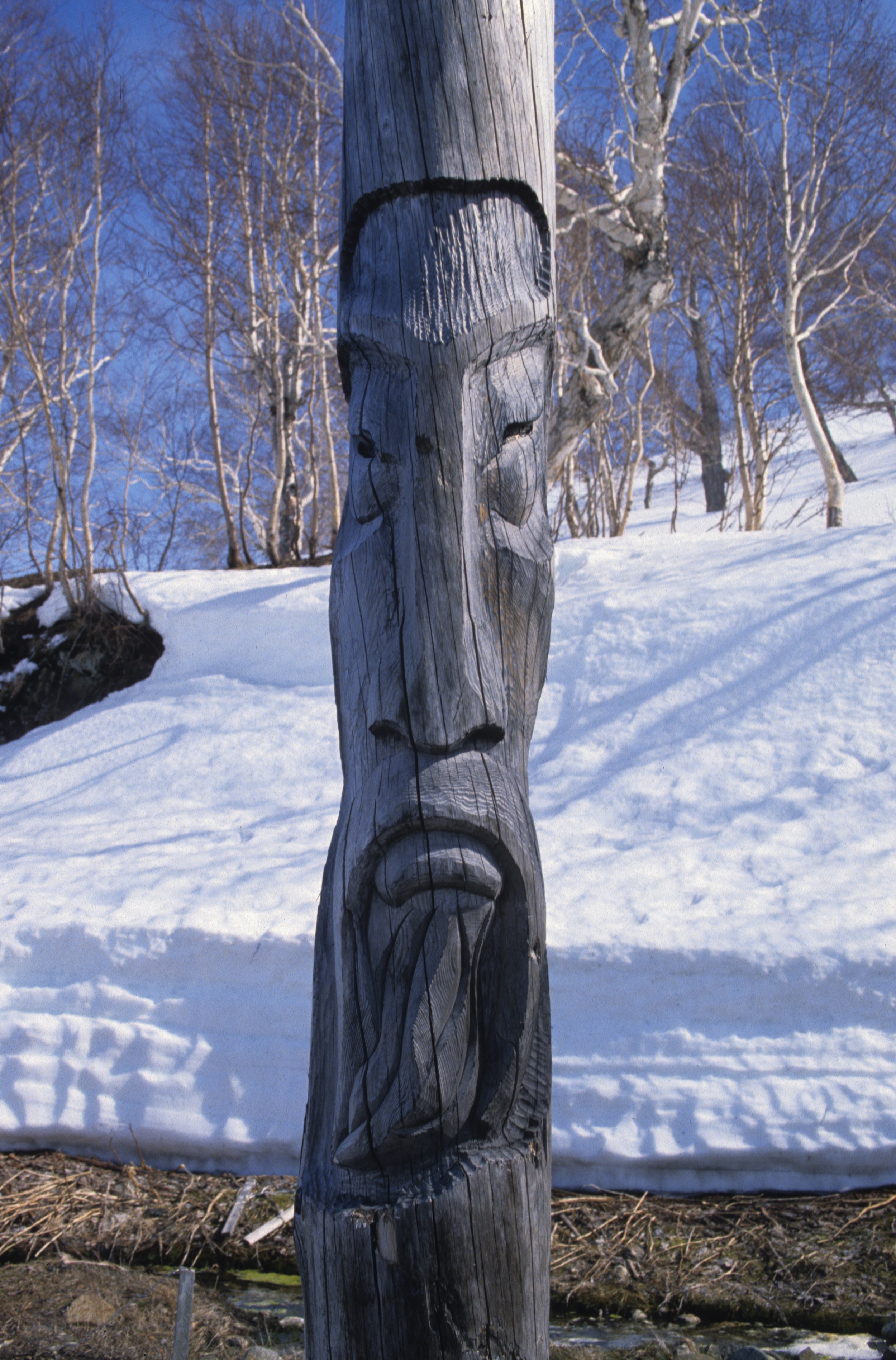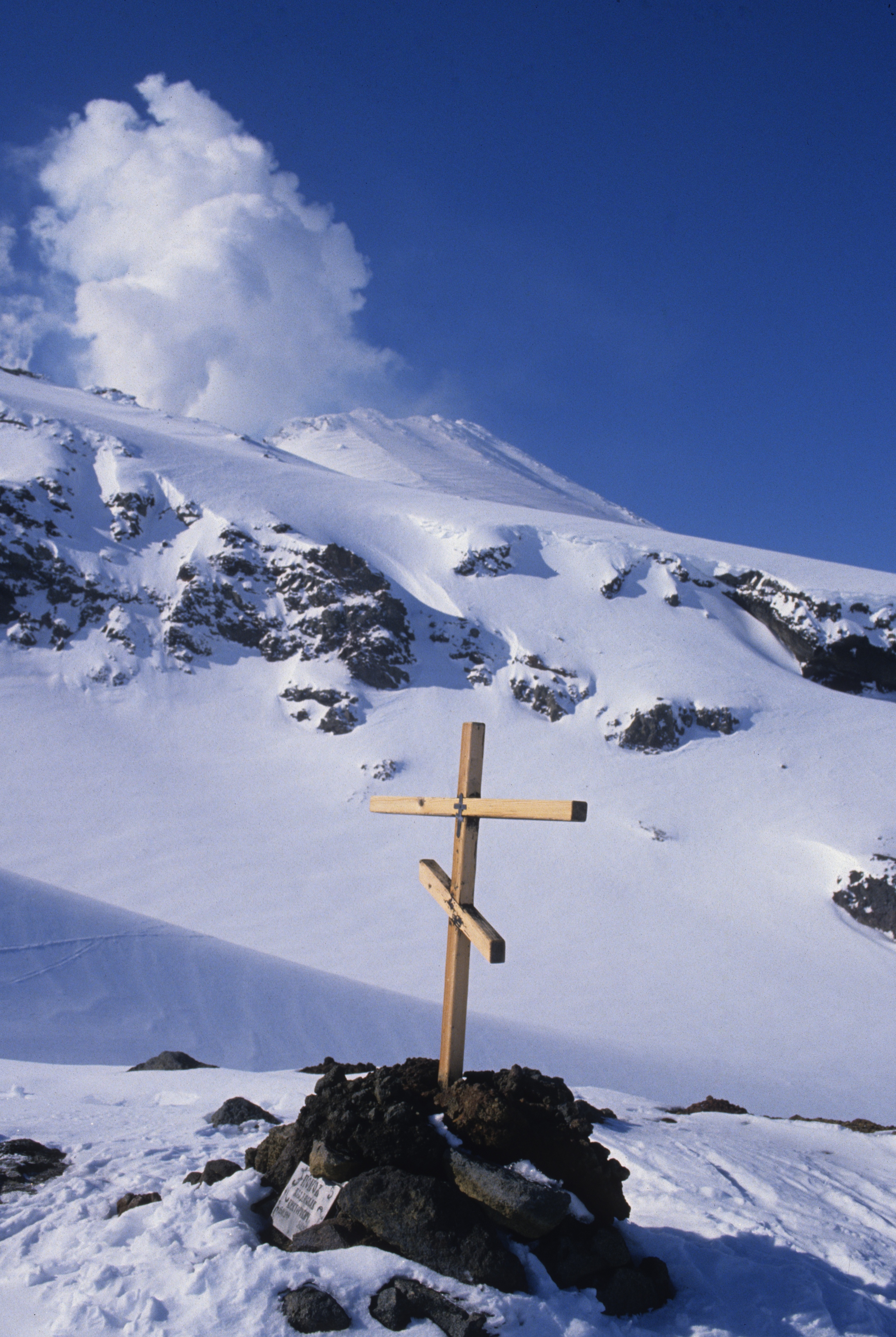Kamchatka, Russia: Heliskiing Vilyuchensky
“I still can’t say what possessed me to climb into an aging Aeroflot M1-8 helicopter with 23 Russian skiers, their skis, packs, a case of vodka and 650 gallons of AV gas.”
Alexander T., Heli Pilot
“You must make priorities. Skiing is a way of life and if the club members must do without other things, or borrow a little to ski, then it is worth it.”
Aeroflot MI-8 Helicopter and skiers
“Humid air rising from the sea, or sulfur gas escaping from an active vent—helicopters and shrouded cliffs are a recipe for disaster.”
Valery Saratsev Airing Above Viluchensky volcano
“In my life I have skied deep powder and sheer faces in Transylvania, the Caucuses and Valdese, Alaska but Kamchatka’s, fresh snow, enormous vertical and wild vistas bests them all.”
Rodnykova Swimming Pool
“Little wonder Kamchatka is known as, ‘Russia’s Wild East.’”
Sousha V., Lovely Daughter of Ski Club Member
“It is difficult to avoid superlatives when describing these first turns on a Russian volcano.”
Andrew Inside Mutnovsky Volcano
I still can’t say what possessed me to climb into an aging Aeroflot MI-8 helicopter with 23 Russian skiers, their skis, packs, a case of vodka and 650 gallons of AV gas. As Vilyuchensky, one of Kamchatka’s hundred plus volcanoes rapidly expands beneath the starboard wheel, I hope that Alexander the pilot aced his last check ride. Or, failing that, ever took a check ride.
Skiing Mutnovsky live volcano, kamchatka, Russia
Skiing in Kamchatka means heliskiing Petropavlovsk’s towering volcanoes. On this day in early May, the MI-8’s is skidding sideways toward the summit crater when another Russian grins and gives me a thumbs up.
Fighting to keep my balance on the red hydraulic fluid that smears the deck, I pray he’s the mechanic.
“Why is everyone so happy?” I yell to my interpreter Sergey Kondrashkin over the deafening throb of the MI-8’s twin 2250 horsepower turbines and enormous, four bladed rotor.
A tall, well built man in his early thirties, Sergey tells me he was eleven years old when he was sent to the national sports institute to train as a swimmer. Competitions enabled him to travel around the former Soviet Union, where he was known for his strength and endurance. He had a great athletic future when he went on a ten day rondinee with three other skiers. “My pack was almost fifty kilos and I had no trouble,” Sergey remembers. Running low on supplies, however, the friends ate a piece of bear meat. None could know it was tainted. The meat killed one of his friends, crippled the other and left Sergey with impaired liver function. He was lucky to survive.
Ship Lifting Off For VILYUCHENSKY
“Normally the Club will hike from the Alney camp to this summit.” Sergey yells in accented English
“How long would that take?” I can barely hear him
“Not long, maybe seven, eight hours to climb from the Rodnykova Ski camp to Vilyuchensky peak…or eight minutes by helicopter.
Since many Russians survive on $200 per month and the ship runs a thousand dollars per hour, I press him for an answer to how the other skiers can afford the helicopter.
“Even divided among twenty-two skiers, it is very, very expensive,” he confesses in heavily accented English. “You must make priorities. Skiing is a way of life and if the club members must do without other things, or borrow a little to ski, then it is worth it. You say you want ski with Russians….but Russians poor. You pay one thousand dollars for helicopter, they pay ten. You solve big problem!!!”
“Sergey, I think you mean “You do the math!!!”
“Exactly.”
Alney Ski Club, Summit of Vilyuchensky
Ranked among the Alney Ski Club membership are eager students, housewives, accountants, lawyers, engineers and policemen none of whom seem unduly worried about the Vilyuchensky’s violent down drafts or the visibility which abruptly closes down above the volcano’s sheer eastern face. Humid air rising from the sea, or sulfur gas escaping from an active vent—helicopters and shrouded cliffs are a recipe for disaster.
I’m within second of voting my majority greenbacks for a blue-sky approach when Vladimir Shetsov, the club president, yanks open the port hatch and starts pitching skis and packs into the VOG.
Ten feet or a hundred, there’s no telling how high we are when Lawyer Valery Saratsev suddenly hucks into the whiteout. In the next instant I am hustled forward by the excited Russians, glimpse a spot of color and windmill out.
Andrew skiing next to sulfur
fumarole of Mutnovsky volcano
Located on Russia’s Pacific Coast, on a north south line from the Russian Kurils and the Japanese Island of Hokkaido along the Pacific Ring of Fire, the 750 mile long Kamchatka Peninsula was formed by 108 volcanoes. Rising to a maximum 15,000 feet, the glacier-ringed cones anchor this wild mix of birch forests and snow covered plains between the Bearing Sea and Sea of Okhostsk. Most of Kamchatka’s have not erupted in hundreds of years. Twenty-eight others, however, shiver with life.
Among the most active is Avachinsky– the perfect, 9000-foot stratovolcano that erupted above Petropavlovsk in January of 1991. A few kilometers south of Vilyuchensky, Mutnovsky vents a constant cloud of sulphurous steam into the clear spring sky. I soon forget trying to pronounce the names and instead focus on the dozen of meters of cold, artic snow that blankets the 6000 vertical feet and 360 degrees of untracked runs.
Petropavlovsk, KAMCHATKA
The capital of Kamchatka is Petropavlovsk. Clustered around Leninskaya and Sovietskaya streets, this gray city of 300,000, still reflects a century of Communist Central Planning. The potholed streets and monolithic walls of concrete block apartments offer scant protection from the harsh winter cold. Hotels are basic, food is simple but the buses more, or less, run on time. Weathered women with steel teeth sell buckets of potatoes, bottles of kefir and bunches of carrots in the Central Market while at night the discos pulse with beautiful Russian girls, tough Russian Mafioso and gray American oil men on the make. Little wonder Kamchatka is known as, “Russia’s Wild East.”
I fall six feet from the MI-8 into fresh powder where the club quickly splits into three groups then follow a steep spine that splits two huge bowls. Chasing Vladimir Shetsov down a chute between two towering red lava walls. I am astounded by the volcano’s size. A hundred turns barely scratch this enormous cone and I ski until the steep high face gradually changes from powder to corn.
Skiing Viluchensky Volcano
Half an hour after jumping onto the summit, I see a tiny MI-8 perched on a distant lava out cropping and stop. It is difficult to avoid superlatives when describing these first turns on a Russian volcano. In my life I have skied deep powder and sheer faces in Transylvania, the Caucuses and Valdese, Alaska but Kamchatka’s, fresh snow, enormous vertical and wild vistas bests them all.
Standing high above Kamchatka’s wild birch forests, shining ocean and endless snowfields, I stare at Mutnovsky’s towering plume of sulfurous steam. Sergey stops next to me and says, “Next we will fly to this volcano and ski into the crater.” He then adds, unnecessarily, “You will see, it will be great adventure!”
The Hotel Oktyabrskaya is close to Lenin Square. The rooms are furnished Russian style but most of the staff do not speak English. Own restaurant. Single $45, double $55, semi suite $105 and suite $160. No credit cards accepted.

